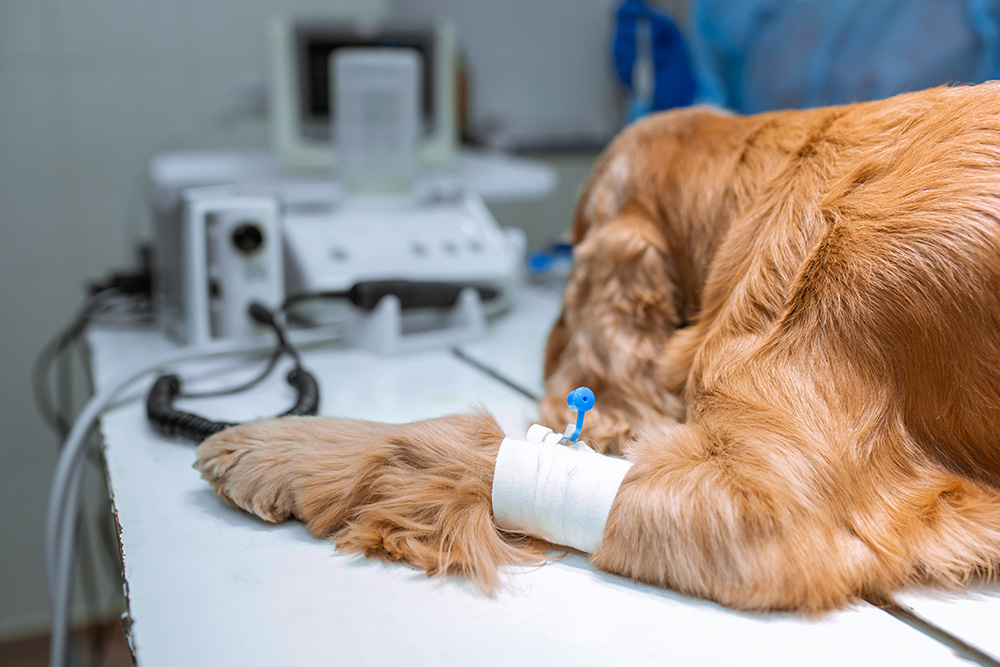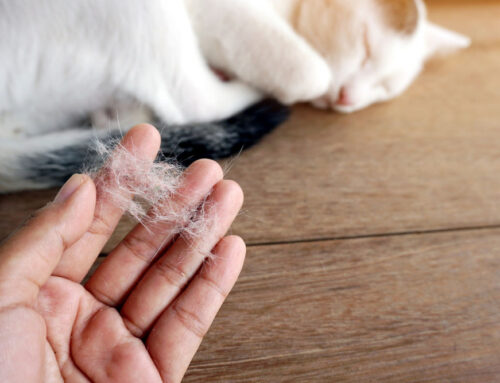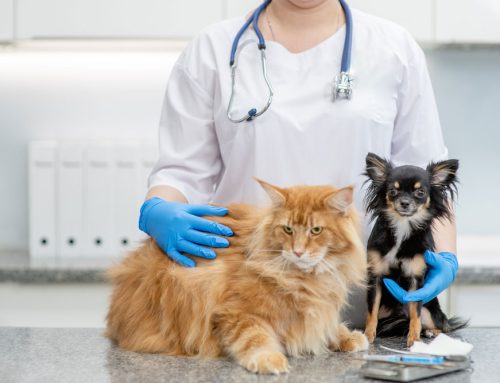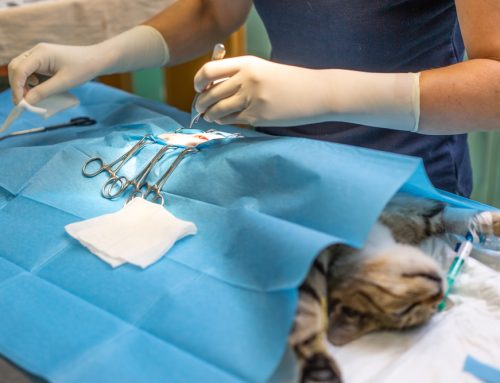When Pets Swallow the Wrong Thing: What Every Dog and Cat Owner Should Know
You turn your back for one minute- and the kitchen’s suspiciously quiet. The sock basket looks lighter, the baby’s pacifier is missing, or the dog’s eyeing the counter where dinner used to be.
A few hours later, your pet’s throwing up or refusing food, and you’re left wondering: Did they eat something they shouldn’t have?
At Sixes Animal Hospital, we see these moments more often than you might think. Dogs and cats are curious by nature, and when curiosity meets opportunity, trouble can follow. Sometimes the object passes harmlessly- but sometimes it doesn’t. Recognizing when to worry and acting quickly can make all the difference in your pet’s recovery.
Recognizing the Signs of a Hidden Obstruction
Foreign body ingestion often starts with mild, easy-to-miss symptoms that worsen over time. Many pets vomit once or skip a meal before their condition becomes critical.
Early warning signs may include:
- Occasional vomiting or dry heaving
- Loss of appetite or reluctance to eat
- Straining without producing stool
- Restlessness or unusual stretching
- Weakness, hiding, or sudden lethargy
If vomiting persists or your pet can’t keep water down, call your veterinarian right away. Persistent symptoms are never “just a stomach bug.”
Different Kinds of Blockages
Not all obstructions are the same– and each type carries its own risks.
- Complete blockage: prevents food and water from moving through the intestines, causing dehydration and rapid decline.
- Partial blockage: leads to intermittent vomiting and weight loss, often mistaken for a less serious issue.
- Linear obstruction: string, yarn, or tinsel folds the intestines like an accordion, risking tissue tearing or rupture.
Why Acting Fast Can Save a Life
When it comes to foreign object ingestion, time is everything. In just a few hours, a mild case can turn into an emergency requiring surgery.
The progression often looks like this:
- Initial vomiting and discomfort
- Severe dehydration and abdominal pain
- Intestinal rupture or infection (peritonitis)
Delays mean higher risk, more complex surgery, and longer recovery times. Common offenders include socks, corn cobs, magnets, ribbons, food packaging, and coins- items that seem harmless until they cause a blockage.
Everyday hazardous household items for pets can easily become an emergency, which is why it’s better to call and ask early than to wait and see.
Our team provides sick and emergency care during office hours and will guide you through the next steps if advanced care or hospitalization is needed.
How Veterinarians Find the Problem
Diagnosing a foreign body requires careful examination and the right technology. Because pets can’t tell us what they swallowed, we use multiple tools to get a clear picture.
A typical diagnostic process includes:
- Physical exam: checking for abdominal pain, bloating, or a string under the tongue (in cats).
- Radiographs (X-rays): identifying gas patterns or visible objects.
- Ultrasound: revealing soft tissue changes, blood flow, and intestinal movement.
- Lab work: evaluating hydration, organ function, and infection risk.
Our hospital’s diagnostic capabilities allow us to pinpoint blockages quickly, so treatment can start before complications develop.
Treatment: From Noninvasive to Surgical Care
When Monitoring May Be Enough
If the object is small, smooth, and recently swallowed, your veterinarian may safely induce vomiting under supervision. Sometimes, fluids and close observation help the object pass naturally. Home remedies are never safe- especially with sharp or unknown materials- so always consult a professional first.
Endoscopic Removal
When the object is located in the esophagus, stomach, or upper intestine, veterinary endoscopy may allow retrieval without surgery. This minimally invasive approach uses a camera and specialized tools to remove the item while your pet is under anesthesia. It offers faster recovery and fewer complications than open surgery.
Surgical Intervention
If the obstruction is complete or the object is large, sharp, or deeply lodged, surgery is necessary. Procedures may include:
- Gastrotomy: opening the stomach to retrieve the item.
- Enterotomy: removing the blockage from the intestine.
- Resection and anastomosis: removing damaged tissue and reconnecting healthy sections.
Our surgical team performs both routine and complex procedures using modern anesthesia monitoring, pain management, and careful post-op care to support your pet’s recovery.
Understanding the Risks and Complications

Even with successful surgery, pets recovering from a gastrointestinal obstruction need close observation for:
- Leakage or suture failure, which can cause peritonitis
- Ileus (slowed intestinal movement) and ongoing nausea
- Aspiration pneumonia due to vomiting
- Short bowel syndrome, leading to poor nutrient absorption
Your veterinarian will recommend when to transition from hospitalization to home care and how to monitor for warning signs during recovery.
Helping Your Pet Heal at Home
Your care matters just as much as what happens in the hospital. To protect your pet’s incision and ensure proper healing:
Post-surgery guidelines:
- Restrict activity for 10–14 days; leash walks only
- Check the incision daily for swelling, redness, or discharge
- Keep the cone on at all times except brief, supervised breaks
- Feed a bland, easily digestible diet in small meals
- Limit jumping, rough play, and unsupervised freedom
Gentle enrichment keeps pets calm while they recover. Try dog enrichment activities that challenge the mind without overexerting the body, or offer safe cat enrichment toys. For crate rest, these dog crate rest tips can help your pet stay content while they heal.
Preventing Foreign Body Emergencies
Prevention begins with understanding your pet’s habits and adjusting their environment.
Practical prevention strategies:
- Keep laundry, trash, and children’s toys out of reach
- Choose sturdy, size-appropriate chew toys
- Avoid leaving food skewers, bones, or scraps accessible
- Use baby gates or closed doors to block risky areas
Training “drop it” and “leave it” commands can stop accidents before they start. For curious dogs or chronic scavengers, basket muzzle training provides added peace of mind during walks or outings.
Planning ahead financially also matters- emergencies can happen to any pet. Understanding your options and review this dog crate rest tips to help you prepare for unexpected veterinary costs.
Partnering with You for Your Pet’s Safety
Foreign body ingestion can be frightening, but with prompt veterinary attention, most pets make a full recovery. At Sixes Animal Hospital, we approach every case as a partnership- working closely with pet owners to choose the safest, most effective path to recovery.
If your pet is vomiting, refusing food, or showing signs of abdominal pain, don’t wait. Contact our team or schedule a same-day visit. For follow-up exams or non-urgent visits, you can request an appointment online.
When quick action matters, our family-focused team is here with the advanced diagnostics, surgical skill, and compassionate care your pet deserves.






Leave A Comment